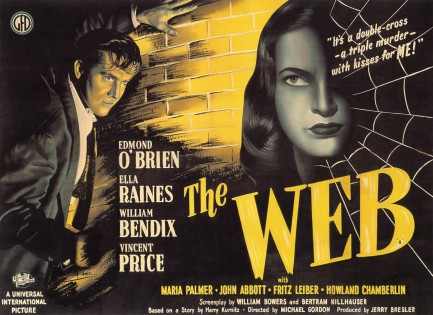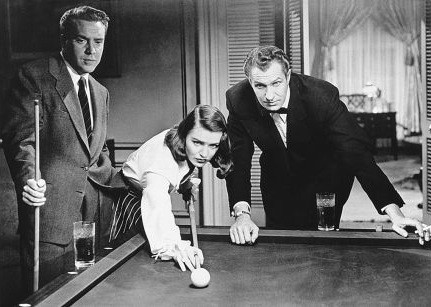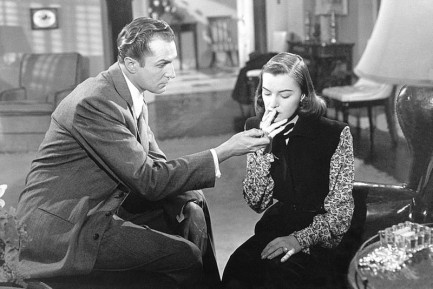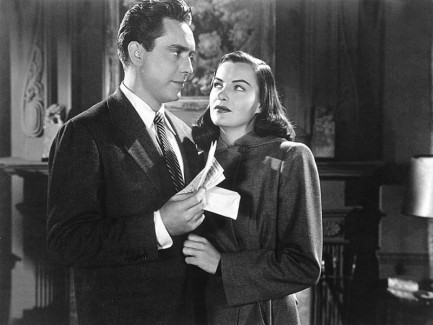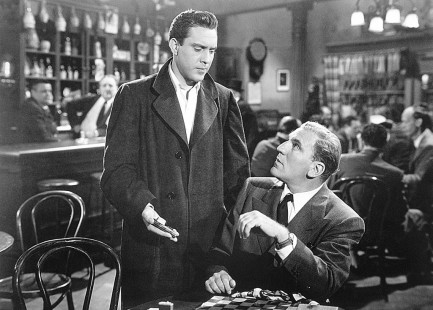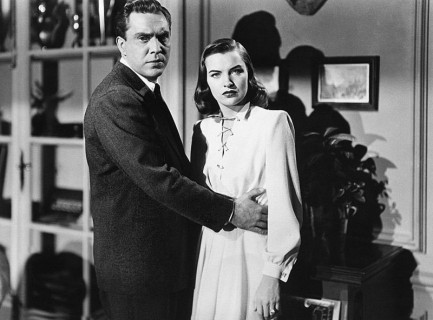 Don't let the smile fool you—that's just acting. This is painful as hell. 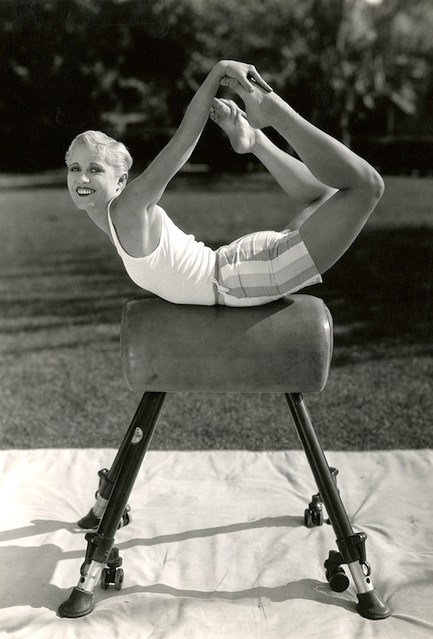
This unusual balancing act on a pommel horse shows U.S. actress Margaret Lee, and we can't help but wonder how many times she toppled off this thing. Well, they say if you fall off just get right back on, and presumably she did. This is the first Margaret Lee, by the way. There have been other—presumably far less flexible—actresses with the same name. Her career consisted almost entirely of short features and uncredited roles, with her finale coming in 1946's Of Human Bondage. The shot is from Universal International Pictures and was photographed by famed lensman Ray Jones. Though it's undated we'll take a guess when it was made—call it 1930.
 After dark the risks are many and the rewards are few. 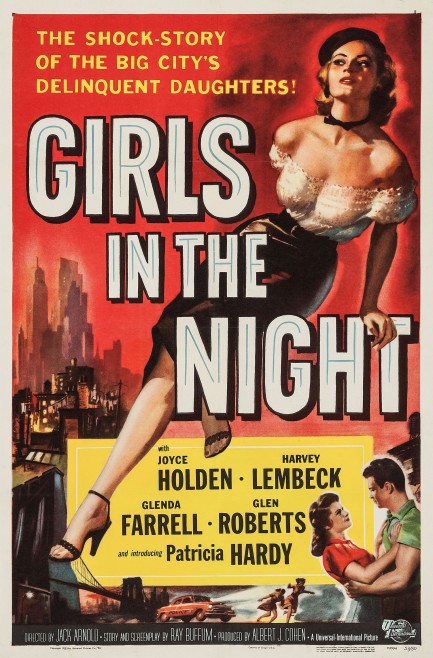
Based on the brilliant poster art, you'd think Girls in the Night was something other than an average b-drama, but some of the most brilliant posters of the mid-century period are tied to mediocre films, and this is another case. Girls in the Night is from Universal International Pictures, and deals with a family stuck in a slum on New York City's east side, and the restless daughter who desperately wants out. Patricia Hardy stars in her debut effort as the ambitious beauty. She and best buddy Joyce Holden suffer all the usual pitfalls—leering dopes, groping hoods, sniveling bros, jealous dames, nagging moms, and the dangers of crime. They more or less handle the first five problems fine, but when Hardy's brother is implicated in a murder the fallout engulfs family and friends. It's an uninspired juvie drama, but what a poster—and it wasn't the only one. We have two more below. Girls in the Night premiered in the U.S. today in 1953. 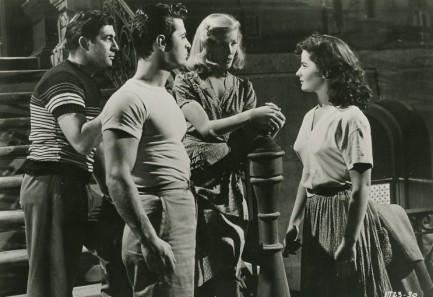 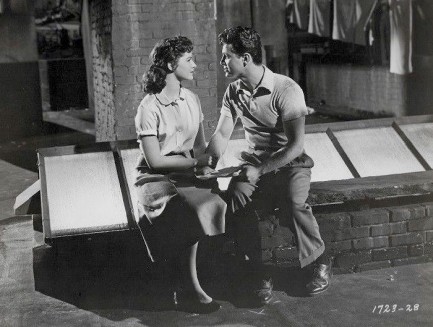 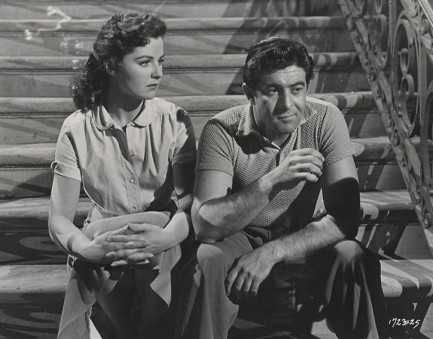 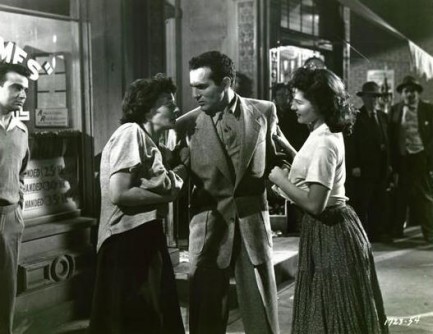 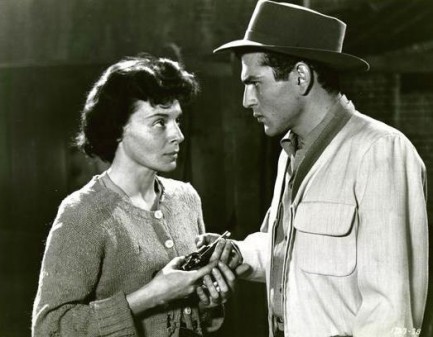 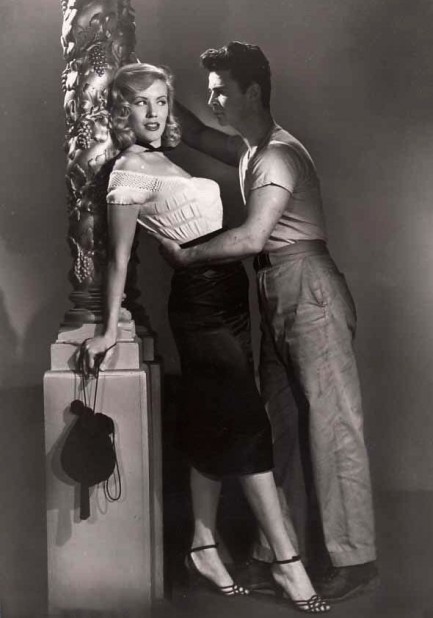 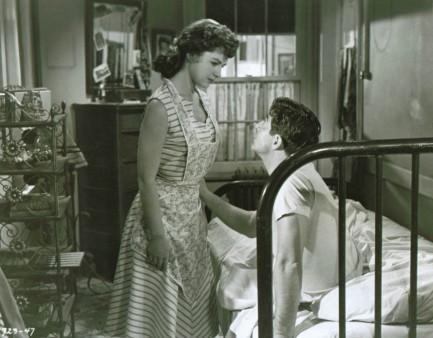 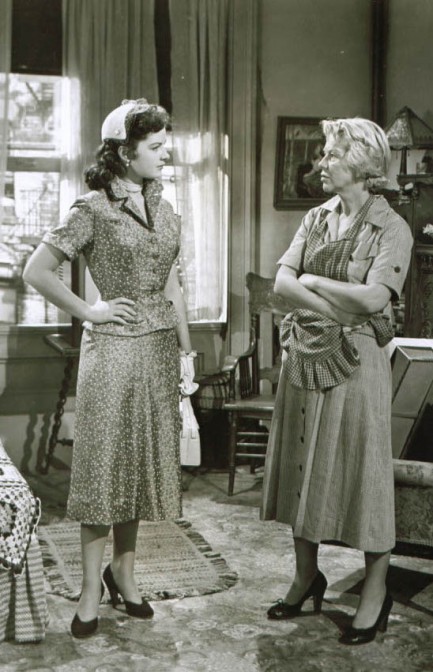 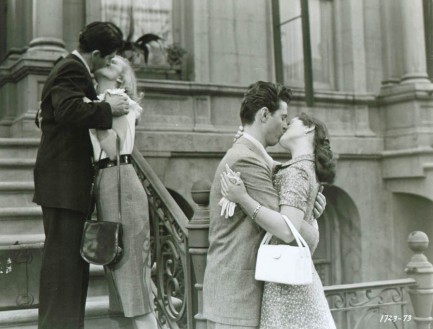 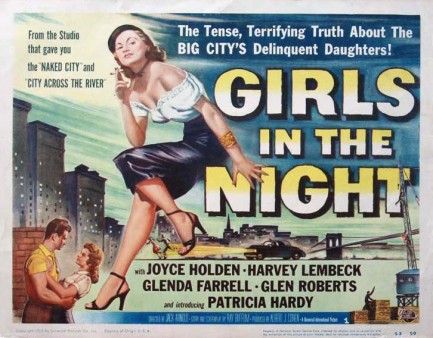 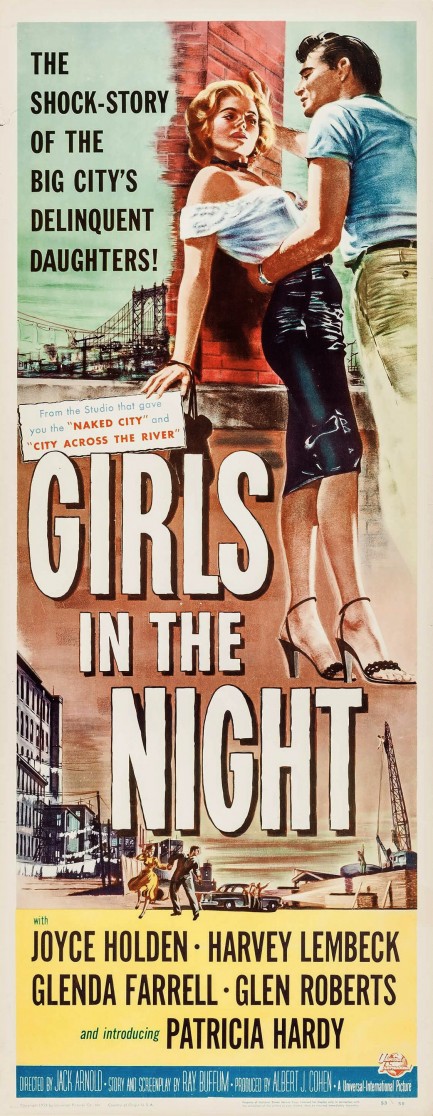
 G.I. foe: the rise of the cobra. 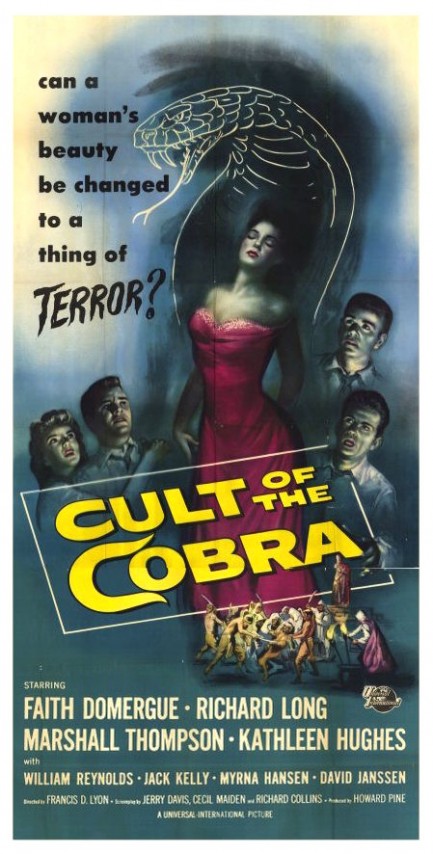
Some promo posters work exactly as intended. We saw this one for Cult of the Cobra and immediately dropped everything to find the film. We knew it was going to be a cheesy b-movie because we'd never heard of it before, and perhaps having low expectations is the key to enjoying it. In the story six American G.I.s in (presumably) India decide to alleviate their boredom by attending a local cobra cult's ritual. When they disrupt the ceremony in spectacularly boneheaded fashion the high priest curses the group. They pay no attention to this at all.
They return to the U.S. not knowing they've been tracked there, but when they start dropping dead they think, “Hey, didn't that high priest dude curse us?” Yes, he did. In fact, he specifically said the cobra goddess would kill them one by one. Missy Misdemeanor Eliot once memorably rapped in her hit song “Slide,” Behind every curtain there's a snake bitch lurkin', and that neatly encapsulates the problem for the surviving G.I.s—they realize they're in trouble but have no idea who their nemesis could be.
But we viewers don't have to guess. Their homicidal stalker is Faith Domergue, raven haired veteran of many beloved sci-fi and horror films, including This Island Earth and The Atomic Man. She also starred in dramas such as Vendetta and Where Danger Lives. She's an unusual looking woman but here her sleepy-eyed beauty really works. You can almost believe she'll turn into a snake at any moment. Check her out:
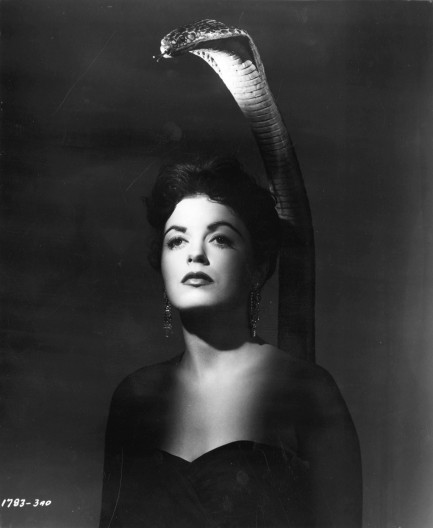 Definite snakelike qualities, right? Definite snakelike qualities, right? Cult of the Cobra is a bad but fun Universal International cheapie, what we like to call a popcorn muncher, a time killer you can enjoy and forget immediately thereafter. Its main attractions are Domergue as the snake woman, the luscious Kathleen Hughes as the hero's love interest, and some amusing cobra-vision sequences. And that amazing promo poster. We also have the alternate U.S. promo and Australian promo below. Cult of the Cobra slithered into cinemas for the first time today in 1955. 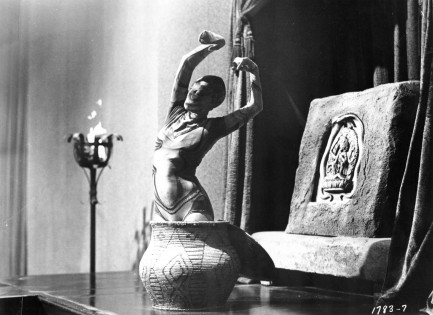 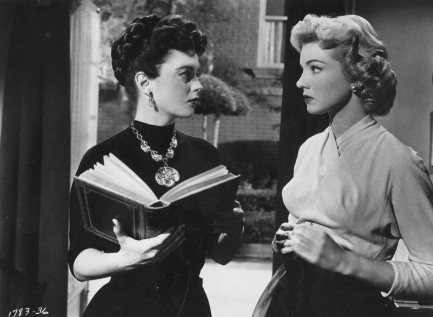 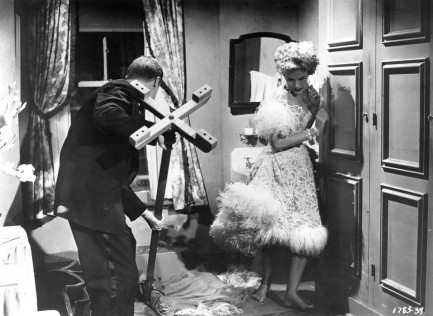 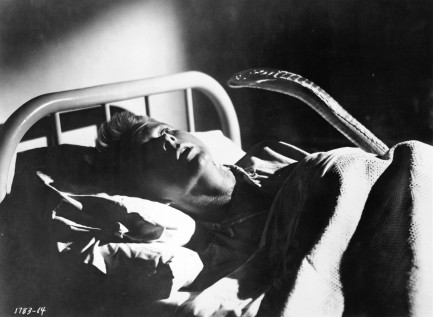 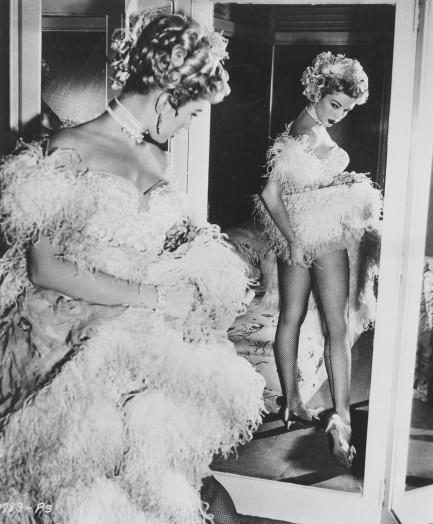 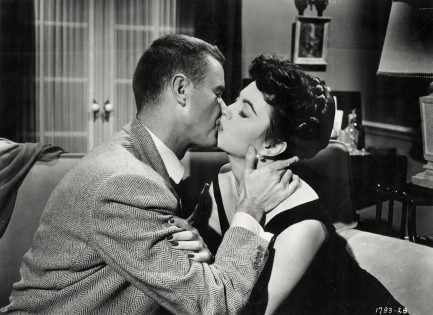 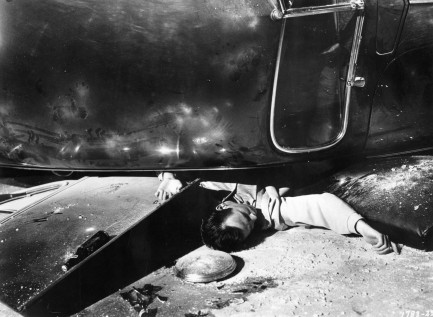 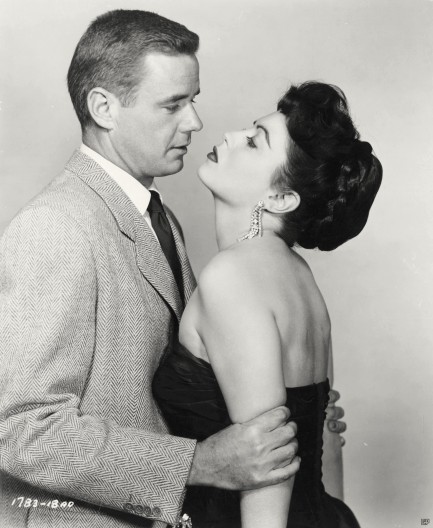 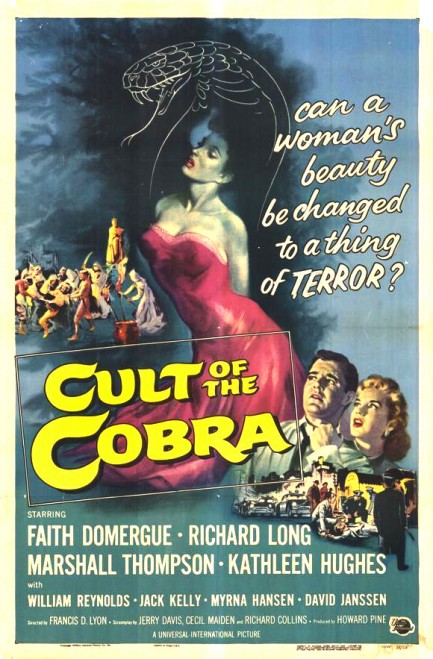 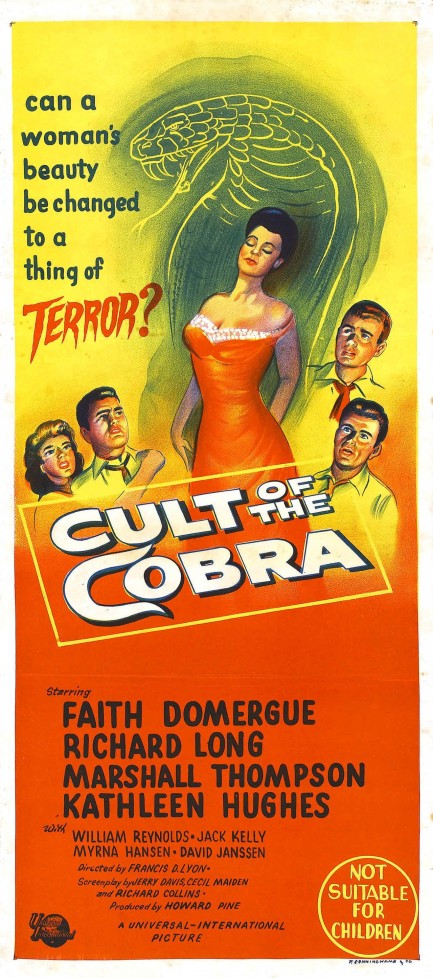
 Say hello to my little agent. 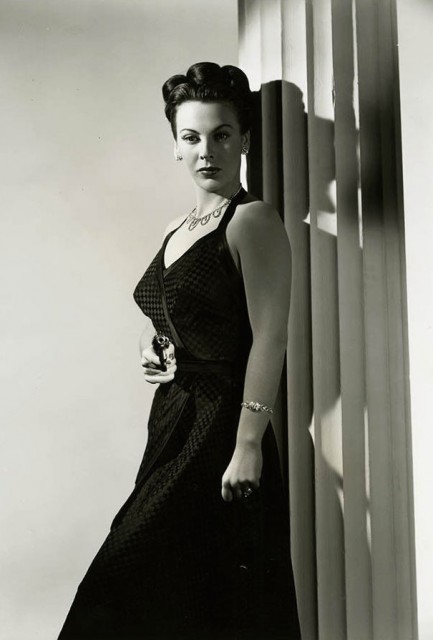
This film noir style Universal Pictures promo image shows Paris born Andrea King, whose given name was Georgette André Barry, but who lived only briefly in France before her mother brought her to the U.S. We just saw her in Mr. Peabody and the Mermaid, but we really remember her best for her role in a great but obscure film noir called Ride the Pink Horse. She also appeared in Shadow of a Woman, Dial 1119, Southside 1-1000, and—we love this last one—Blackenstein. The above shot showing her in take charge mode is from 1949.
 Was it self-defense or murder? That’s always the question. 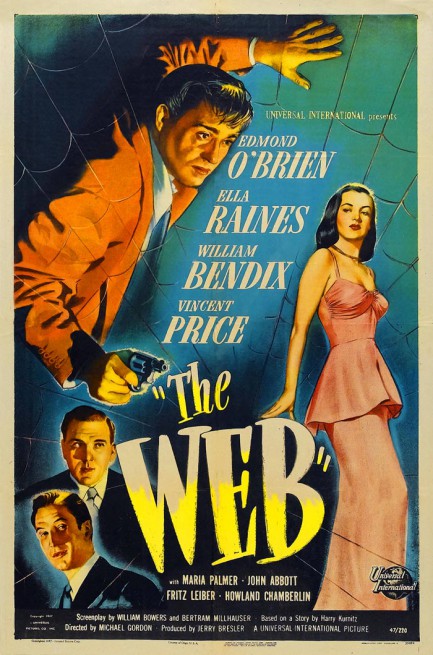
Do embezzlers even exist anymore, or is all that legal now? That’s the first question we had about The Web. The second was whether it’s believable for a lawyer to accept a gig moonlighting as a bodyguard for a wealthy and arrogant businessman. Well, maybe, if he wants mainly to get close to his new employer’s hot secretary Ella Raines. And his plan seems to be working, too, but just when things are heating up between them he has to shift into bodyguard mode and ends up killing an intruder bent on ventilating the businessman. But was the shooting legit or was it all a set-up to eliminate a rival? The lawyer starts to have suspicions when the dead man’s daughter appears and accuses him of being a hired murderer. From her perspective, what else could he appear to be? Raines, Edmond O’Brien, William Bendix, Vincent Price, John Abbott, and Maria Palmer do tolerable work here, but director Michael Gordon hits a few snags. For example, he shoots a restaurant scene between O’Brien and Bendix on two different sets and splices the halves together. Did one set burn down? Did the budget not include provisions for continuity? You can spot that gaffe at about 45:00. There are others. If you don’t mind such details there’s enjoyment to be had here, but if you like technical proficiency in your cinema, perhaps steer clear. The Web premiered in the U.S. today in 1947.
 Undercover but not inconspicuous. 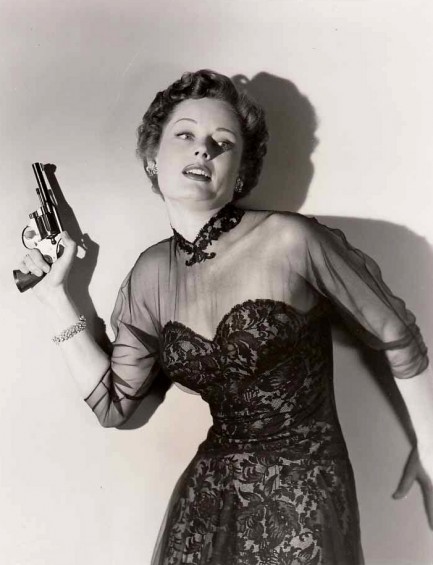
Above, Canadian actress Alexis Smith, née Gladys Smith, in a Universal International Pictures promo shot made in 1950 for her cop thriller Undercover Girl. She also appeared in Conflict, Of Human Bondage, The Two Mrs. Carrolls, and more than fifty other films.
 The eyes of March. 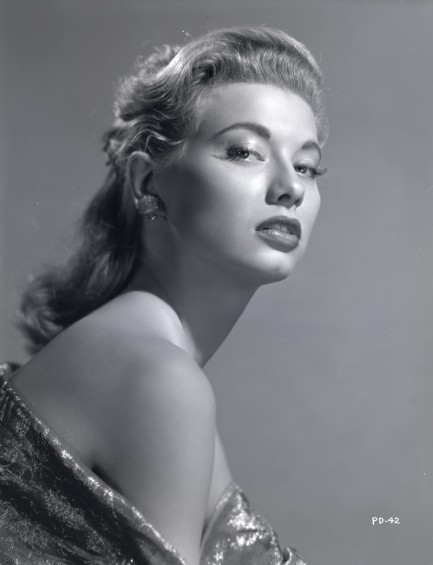
Peggy Dow was born Margaret Josephine Varnadow in March 1928 and came to widespread notice in her second feature, the film noir Undertow. She had earned a seven-year contract with Universal International Pictures and it’s certain they thought they had a big star on their hands, but after three years in movies she abruptly quit to marry an Oklahoma oilman and settled into family life and motherhood. She may not be well remembered today, but we’re pretty sure this promo photo will stick in the mind. It was made in 1949.
 This must be her way of asking for a foot massage. 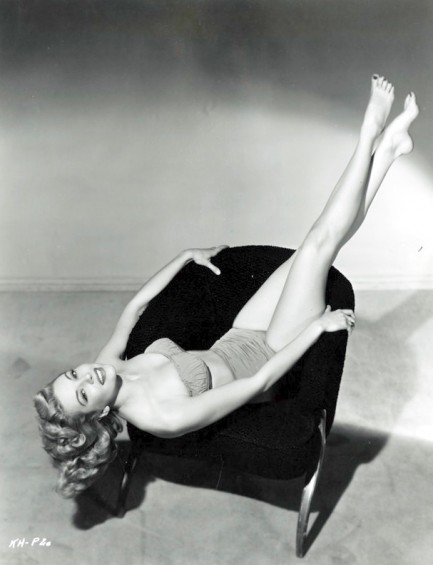
Above, a Universal International Pictures promo shot of American actress Kathleen Hughes, who starred one of our favorite hilariously awful films, It Came from Outer Space, and another movie that sounds terrible but which we haven't seen yet*, Cult of the Cobra. She also acted in television extensively and appeared on Perry Mason, Gomer Pyle, I Dream of Jeannie and Mission: Impossible. This image dates from 1953. *We've seen it now. It's bad.
|
 |

The headlines that mattered yesteryear.
2003—Hope Dies
Film legend Bob Hope dies of pneumonia two months after celebrating his 100th birthday. 1945—Churchill Given the Sack
In spite of admiring Winston Churchill as a great wartime leader, Britons elect
Clement Attlee the nation's new prime minister in a sweeping victory for the Labour Party over the Conservatives. 1952—Evita Peron Dies
Eva Duarte de Peron, aka Evita, wife of the president of the Argentine Republic, dies from cancer at age 33. Evita had brought the working classes into a position of political power never witnessed before, but was hated by the nation's powerful military class. She is lain to rest in Milan, Italy in a secret grave under a nun's name, but is eventually returned to Argentina for reburial beside her husband in 1974. 1943—Mussolini Calls It Quits
Italian dictator Benito Mussolini steps down as head of the armed forces and the government. It soon becomes clear that Il Duce did not relinquish power voluntarily, but was forced to resign after former Fascist colleagues turned against him. He is later installed by Germany as leader of the Italian Social Republic in the north of the country, but is killed by partisans in 1945.
|

|
|

It's easy. We have an uploader that makes it a snap. Use it to submit your art, text, header, and subhead. Your post can be funny, serious, or anything in between, as long as it's vintage pulp. You'll get a byline and experience the fleeting pride of free authorship. We'll edit your post for typos, but the rest is up to you. Click here to give us your best shot.

|
|

















 Definite snakelike qualities, right?
Definite snakelike qualities, right?













